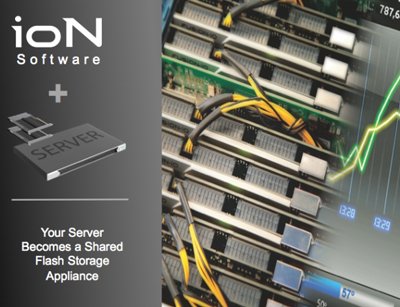Fusion-io is pushing the boundaries of storage capability with a new release it says gives way to software-defined storage, built using a combination of traditional Fusion-io Memory products and new Fusion-io software.
Fusion ION software can transform every day servers into network-shared io Memory appliances, and will be sold through Fusion-io’s channel partners to server vendors as a value-add for customers wanting faster response times from storage.
Fusion-io’s Chief Scientist is Steve Wozniak, the co-founder of Apple. He said the company has been heavily focussed on using software to advance modern computer systems.
“Powerful software can be the foundation for incredible innovation, especially when it’s also an open system that shares resources,” Wozniak said.
Fusion-io CEO and Chairman David Flynn told FOCUS this notion of software-defined storage, however, is also heavily dependent on the transformations now being seen in the hardware space.
“Storage systems are now finally able to be transformed to open architectures like the mainframe was transformed into the PC-based computers we see today,” Flynn said.
“By using SSD in place of mechanical disk drives, companies like Facebook and Apple can provide high-speed data services because they are storing the data on microchips as opposed to spinning the platter of rust.
“We are going from a transformation from mechanical-based systems to electronics, and the implications of this will be even more profound when you look at how it will change the industry landscape, [especially] when looking at how companies sell their products.”
Flynn said when placed in a server, ION has the potential to create “the highest performing storage system on the planet”.
“Our io Memory is at the heart of making this possible,” Flynn said.
“Normally an off-the-shelf sever could not be trusted. If the power, for example, were to be accidentally lost on a regular server you would lose the data that has not yet been stored on the medium.
“With io Memory, the media is fast enough that we can store everything synchronously, as the data is not kept in the RAM.”
This will appeal to companies such as Facebook and other big service providers on the internet that rely on data bases and focus their business on analytics.
ION can be used to create RAID (redundant array of independent disk sets), LUN (Logical Unit Number), SNMP (Simple Network Management Protocol), carry out performance monitoring and can transform a Tier 1 server into a shared data acceleration appliance, which allows levels of customization.
Flynn said it has the ability to carry out more than 1million iops per second, and does more than 6Gbps in access bandwidth with a latency of less than 0.06ms.
“It is very much for people that want to make decisions very, very fast,” Flynn said.
Like in the Wall Street world of algorithmic trading, as it is not about response time of the system, per say, it is about how many of the requests your software can handle.”
And while Flynn admits some of this may sound familiar, he said Fusion-io has finally reworked the business model to make this release stick in the market.
“In the past people have tried to sell storage systems as a software overlay on top of regular hardware,” Flynn said.
“But it has not really been a viable business model for two reasons. First because the mechanical disk drives are too big and it takes a custom frame just to hold enough of those disk drives, and the controller that talk to the disk drives are of questionable capabilities.
“The second reason is because you cannot monetise it. It is a liability to take on the burden of managing people’s data. Many companies have tried and gone down that path and realized they can’t support every last controller or disc drive out there.”
Fusion-io has overcome this by making its own storage piece – the memory data accelerators.
“This allows us to guarantee the integrity of data and gives us the leg to maintain our business by selling just the software layer on top as an add-on.”

